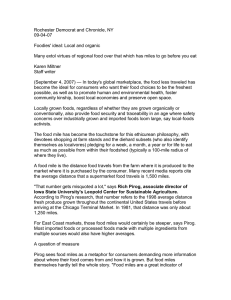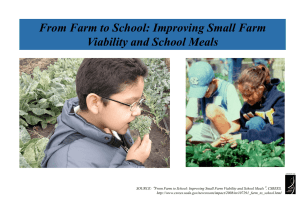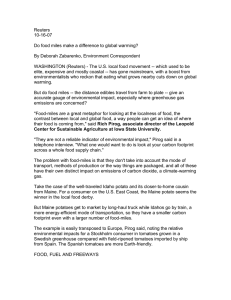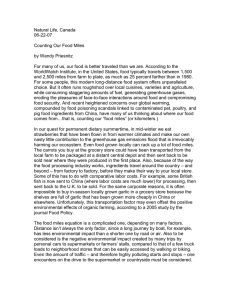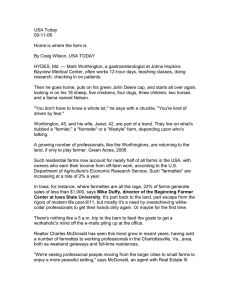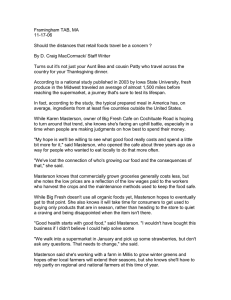Express, DC 04-18-07 Green Guide: Miles to Go Before I Eat
advertisement
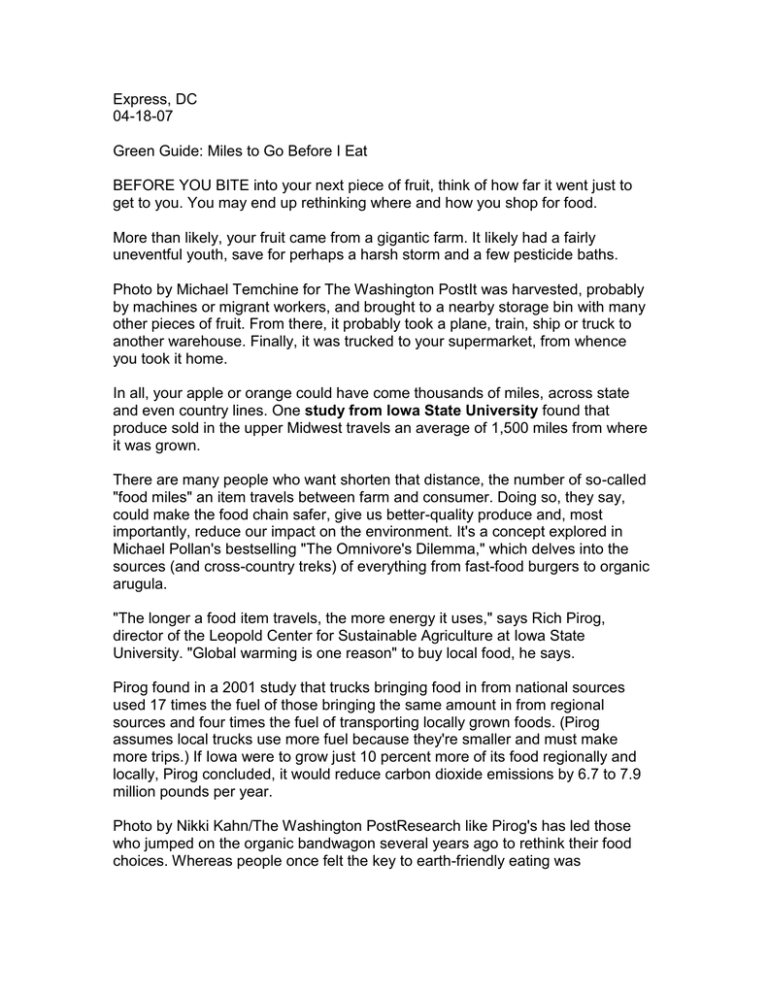
Express, DC 04-18-07 Green Guide: Miles to Go Before I Eat BEFORE YOU BITE into your next piece of fruit, think of how far it went just to get to you. You may end up rethinking where and how you shop for food. More than likely, your fruit came from a gigantic farm. It likely had a fairly uneventful youth, save for perhaps a harsh storm and a few pesticide baths. Photo by Michael Temchine for The Washington PostIt was harvested, probably by machines or migrant workers, and brought to a nearby storage bin with many other pieces of fruit. From there, it probably took a plane, train, ship or truck to another warehouse. Finally, it was trucked to your supermarket, from whence you took it home. In all, your apple or orange could have come thousands of miles, across state and even country lines. One study from Iowa State University found that produce sold in the upper Midwest travels an average of 1,500 miles from where it was grown. There are many people who want shorten that distance, the number of so-called "food miles" an item travels between farm and consumer. Doing so, they say, could make the food chain safer, give us better-quality produce and, most importantly, reduce our impact on the environment. It's a concept explored in Michael Pollan's bestselling "The Omnivore's Dilemma," which delves into the sources (and cross-country treks) of everything from fast-food burgers to organic arugula. "The longer a food item travels, the more energy it uses," says Rich Pirog, director of the Leopold Center for Sustainable Agriculture at Iowa State University. "Global warming is one reason" to buy local food, he says. Pirog found in a 2001 study that trucks bringing food in from national sources used 17 times the fuel of those bringing the same amount in from regional sources and four times the fuel of transporting locally grown foods. (Pirog assumes local trucks use more fuel because they're smaller and must make more trips.) If Iowa were to grow just 10 percent more of its food regionally and locally, Pirog concluded, it would reduce carbon dioxide emissions by 6.7 to 7.9 million pounds per year. Photo by Nikki Kahn/The Washington PostResearch like Pirog's has led those who jumped on the organic bandwagon several years ago to rethink their food choices. Whereas people once felt the key to earth-friendly eating was supporting natural growing practices, they now wonder if reducing food miles might be just as important. As an example, an organic raspberry grown in California might be raised with fewer pesticides than its conventionally raised cousin in Virginia, but the amount of gasoline, oil and jet fuel used to schlep it to the East Coast could negate the positive environmental impact of its organic-ness. "When you consider all the energy inputs, am I really better off?" asks Pirog. Ideally, of course, you'd buy both local and organic, a feat Nora Pouillon accomplishes at her D.C. restaurants Nora and Asia Nora. Plus, she says, buying local helps save farmland from development. "We don't want the building sprawl and the mall sprawl to overcome our farmland," says Pouillon. When she moved to the District more than 30 years ago, Tysons Corner was entirely green fields. Pouillon began buying from local farmers decades ago, when she opened Nora in Dupont Circle. In addition to being better for the environment, local produce, she says, tastes better and is healthier. "The farmer can pick it when it's riper, when it's at its height of nutritional value and flavor," she explains. Produce from nearby farms tends to be fresher and often better quality, too. Other D.C. restaurateurs have followed suit, meaning you'll often find West Virginia ramps on the menu come spring, and organic Virginia apples in your pie in autumn. Meaning that cleaning up the environment might lead you to clean your plate. WANT TO REDUCE your food miles? Here's some tips: » Shop at farmers' markets. Eastern Market is the area's biggest and oldest, but your neighborhood might well have its very own. Look for "producer-only markets," at which all the vendors raise or farm their own products. Localharvest.org offers a thorough list of farmers' markets in the area. » Ask your grocer. If he or she doesn't know where the store's produce originated, ask why not, suggests Ann Yonkers, founder of Fresh Farm Markets, a collection of area farmers' markets. At Whole Foods, most produce bins list where the food is grown, and local foods are tagged as such. » Buy from a CSA (Community Supported Agriculture). That allows consumers to receive regular shipments from a local farm. Localharvest.org has a list. » Learn what's in season. Modern supermarkets have gotten us used to having all products at all times — often at the expense of sustainability and taste, says Yonkers. Spring is the time for green vegetables like asparagus, lettuce, peas and chives, for instance. See freshfarmmarket.org for a chart of different growing seasons. » Continue your education. There are many resources on the Web. Nationally, the Leopold Center for Sustainable Agriculture and Sustainable Table's Eat Well Guide are good places to start. Locally, check out Future Harvest and the Johns Hopkins Center for a Livable Future.
